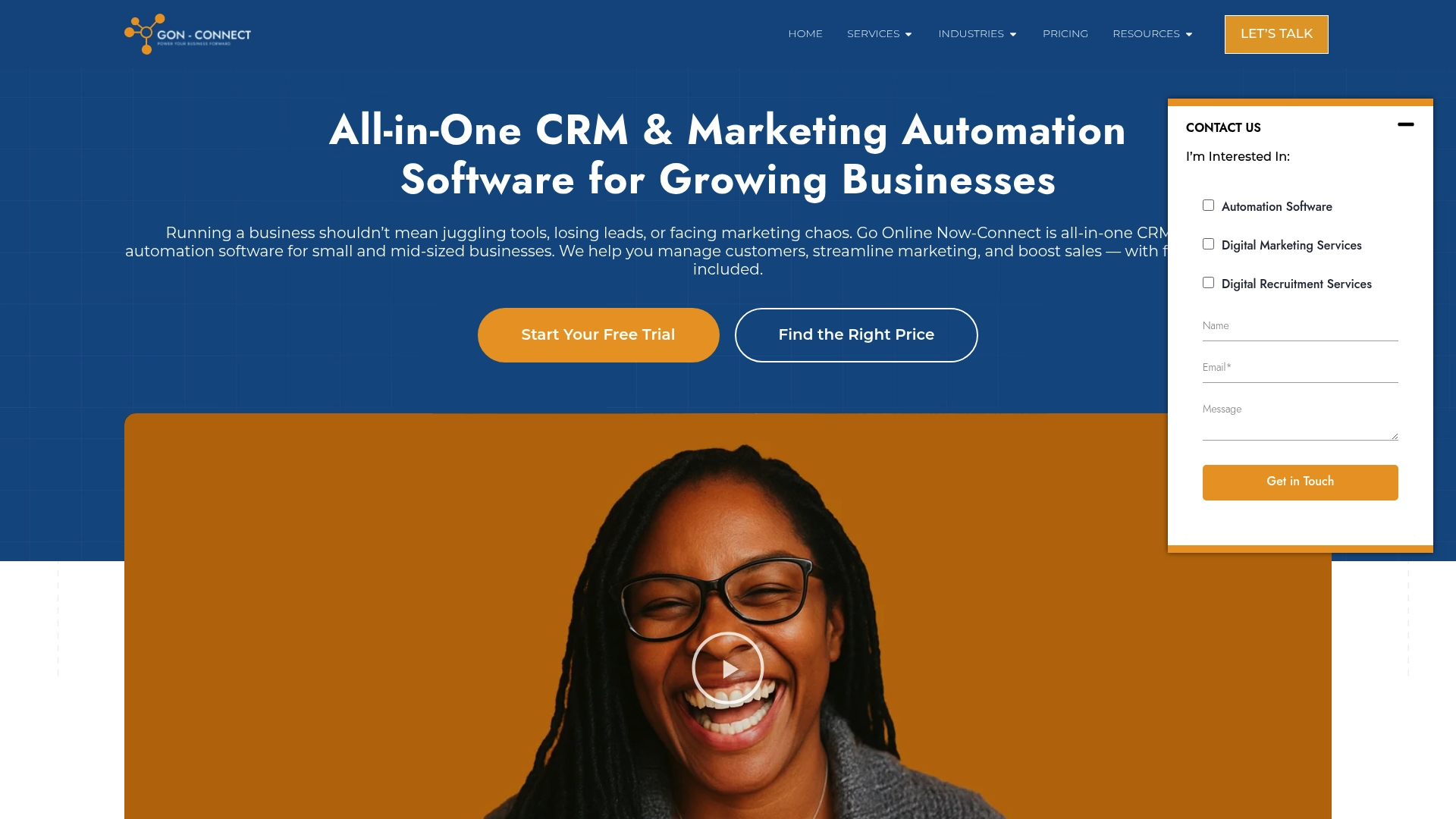Nearly 80 percent of generated leads never convert into sales, according to industry research. Missing out on the right prospects can cost businesses valuable time and revenue. By understanding exactly who your target audience is and how to guide them through tailored marketing, you can turn more potential leads into loyal customers. Smart segmentation, automated workflows, and ongoing optimization form the backbone of modern lead nurturing success.
Step 1: Define Your Target Leads and Segments
Defining your target leads and segments is the strategic foundation of successful lead nurturing. This critical step helps you align your marketing efforts with the most promising potential customers by understanding their specific characteristics and needs.
According to advertising.globalspec, effective lead segmentation involves categorizing potential customers using multiple precise criteria. These key segmentation dimensions include:
- Industry type
- Demographics
- Product interest level
- Buying timeframe
- Purchasing authority
- Budget range
- Potential deal size
- Geographic location
- Digital behavior patterns
As en.wikipedia explains, market segmentation is not just about categorization but about strategically identifying profitable customer groups and understanding their unique motivations. This approach allows you to craft targeted messages that resonate with specific audience segments.

To begin segmenting your leads, start by analyzing your existing customer database and identifying common characteristics among your most valuable clients. Look for patterns in their backgrounds, behaviors, and purchasing histories. Create detailed personas that represent your ideal customer types, which will serve as blueprints for targeting similar prospects in your lead nurturing campaigns.
Pro Tip: Avoid the common mistake of creating too many segments. Focus on 3-5 core customer personas that genuinely represent distinct market groups. Quality of segmentation matters more than quantity.
Once you have defined your target leads and segments, you will be prepared to develop personalized marketing strategies that speak directly to each group’s specific needs and pain points.
Step 2: Design Automated Lead Nurturing Workflows
Designing automated lead nurturing workflows transforms how your business connects with potential customers by creating intelligent, responsive marketing pathways. This critical step allows you to deliver personalized experiences that guide leads smoothly through your sales funnel.
According to business.adobe, effective lead nurturing requires implementing behavioral segmentation and targeting across multiple channels. The key is designing transition rules in your marketing automation system that dynamically send the most relevant content based on each lead’s specific behaviors and interactions.
arxiv research highlights that modern automation platforms work by creating workflows with strategic triggers and subsequent actions. To build your workflow, start by mapping out the typical customer journey and identifying critical decision points where automated interventions can provide maximum value.
Your workflow should include multiple stages:
- Initial engagement trigger
- Behavior tracking
- Segmentation
- Personalized content delivery
- Scoring and qualification
- Handoff to sales team
Pro Tip: Focus on creating flexible workflows that can adapt to individual lead behaviors. The most successful nurturing campaigns allow for dynamic path adjustments based on real time interactions.
By designing intelligent automated workflows, you transform your lead nurturing from a static process to a responsive, personalized experience that feels individualized to each potential customer.
Step 3: Create Personalized Content and Messaging
Creating personalized content and messaging is the strategic art of speaking directly to your leads individual needs, transforming generic marketing into a targeted conversation that resonates with each potential customer.
According to similarweb, effective personalization begins with lead scoring and enrichment. By systematically attributing values to leads and enhancing their profiles with additional data, you can craft content that precisely guides them through their unique buyer’s journey.
videoqi research highlights the power of hyper-personalized email automation and drip campaigns that adapt in real time to a lead’s behavior, demographic information, and current position in the sales funnel. This approach ensures your messaging feels like a tailored conversation rather than a mass communication.
To create truly personalized content, follow these strategic steps:
- Analyze lead behavior and interaction data
- Map content to specific buyer journey stages
- Use dynamic content elements that change based on lead attributes
- Craft messaging that addresses specific pain points
- Develop multiple content variations for different audience segments
- Continuously test and refine your personalization approach
Pro Tip: Personalization goes beyond just inserting a first name. Focus on delivering content that demonstrates a deep understanding of your lead’s specific challenges and aspirations.
By mastering personalized content and messaging, you transform your marketing from a broadcast approach to a meaningful dialogue that builds trust and moves leads closer to conversion.
Step 4: Set Up Lead Scoring and Qualification Rules
Setting up lead scoring and qualification rules transforms how you prioritize and manage potential customers, turning raw lead data into a strategic roadmap for sales engagement. This critical process helps you identify and focus on the most promising prospects.
According to nordicleaddatabase, effective multi-channel lead scoring ranks leads by evaluating their value and engagement across diverse touchpoints. This comprehensive approach considers interactions from email opens and website visits to social media engagement and webinar participation, providing a holistic view of each lead’s potential.
worknet research highlights the power of progressive profiling and lead scoring working in tandem. This method gradually builds a deep understanding of prospects by collecting data through multiple interactions while simultaneously assigning numerical values based on demographic profiles and behavioral signals.
To establish an effective lead scoring system, consider these key components:
- Define ideal customer profile characteristics
- Assign point values to different engagement behaviors
- Create weighted scoring across multiple interaction channels
- Establish clear qualification thresholds
- Develop automated progression rules
- Implement regular scoring model refinement
Pro Tip: Your lead scoring model should be dynamic and flexible. Regularly review and adjust your scoring criteria based on actual sales outcomes and changing market conditions.
By developing a sophisticated lead scoring and qualification approach, you transform your lead management from a guessing game into a precise, data driven strategy that maximizes your sales team’s efficiency and effectiveness.
Step 5: Monitor Results and Optimize Your Process
Monitoring and optimizing your lead nurturing process is the key to transforming good marketing into exceptional business growth. This crucial step helps you understand what works, what needs improvement, and how to continuously enhance your lead generation strategy.
According to the rackcdn research, top lead nurturing tactics include email newsletters, webinars, custom content like case studies, and research-based materials. By closely monitoring these initiatives, you can systematically refine your approach and improve overall performance.
phantombuster highlights the importance of lead data enrichment, suggesting that tracking additional insights such as social media interactions and professional activities can provide deeper understanding of your prospects.
To effectively monitor and optimize your lead nurturing process, implement these strategic steps:
- Track key performance indicators (KPIs)
- Analyze conversion rates at each funnel stage
- Review engagement metrics across channels
- Compare actual results against initial goals
- Identify bottlenecks in your current process
- Experiment with alternative messaging and approaches
Pro Tip: Optimization is an ongoing process. Set up a quarterly review system to systematically assess and adjust your lead nurturing strategy based on real world performance data.
By committing to continuous monitoring and strategic optimization, you transform your lead nurturing from a static process into a dynamic, responsive system that consistently improves and delivers better results.
![]()
Unlock Smarter Lead Nurturing with Go Online Now-Connect
Are you ready to overcome the common challenges of lead segmentation, automated workflows, and personalized messaging highlighted in the Lead Nurturing Process Guide for SMB Growth Success? Many SMB owners struggle with juggling scattered tools and complex setups that slow down growth and waste precious time. Our all-in-one Automation Archives – Go Online Now solutions help you build flexible lead nurturing workflows and dynamic lead scoring systems without the hassle.

Experience up to 85 percent more conversions and save 75 percent of your time within 90 days by switching to Go Online Now-Connect. We combine marketing automation, a user-friendly all-in-one CRM, and expert digital marketing services tailored specifically for small business owners like you. Take control of your lead nurturing with proven, simple tools backed by real human support. Visit us today at https://goonlinenow.co and see how easy growth can be when everything you need is in one place.
Frequently Asked Questions
How can I define my target leads for more effective lead nurturing?
To define your target leads, analyze your existing customer database to identify common characteristics among your most valuable clients. Create detailed personas based on their demographics, behaviors, and interests to effectively guide your marketing efforts.
What are the key components of designing automated lead nurturing workflows?
Key components include mapping the customer journey, identifying critical decision points, and creating triggers based on lead behavior. Start by establishing stages such as initial engagement, behavior tracking, and content delivery to guide potential customers through the sales funnel.
How do I create personalized content for my lead nurturing efforts?
To create personalized content, analyze lead behavior and segment your audience based on their stage in the buyer’s journey. Use dynamic messaging that addresses specific pain points and test variations to see which resonates most with each segment.
What criteria should I use for lead scoring and qualification?
Focus on defining ideal customer profile characteristics and assign point values to engagement behaviors like email opens and website visits. Create clear thresholds for progression to help prioritize which leads your sales team should pursue first.
How can I monitor and optimize my lead nurturing process effectively?
To monitor your lead nurturing process, track key performance indicators (KPIs) like conversion rates and engagement metrics. Conduct quarterly reviews to identify bottlenecks and adjust your strategies based on real-world performance data to continuously improve results.

